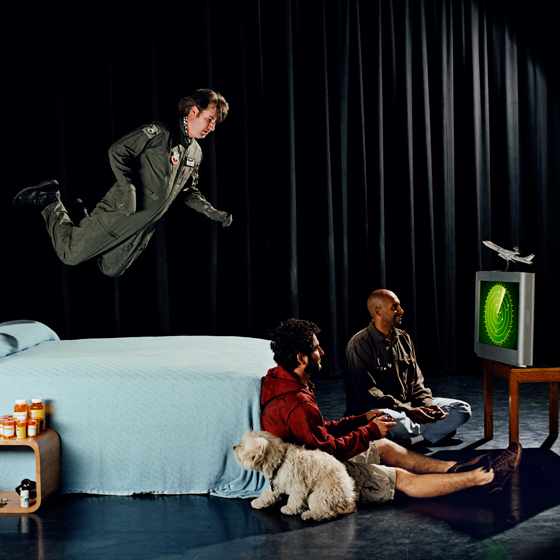|
 |
|
|||||||||
I was an airborne radar technician/firefighter. I ran the radar on the Airborne Warning and Control System (AWACS). It’s a secret, so I’m not going to tell the specifics, but the AWACS can see a certain range around the aircraft. If we see on the radar that there’s a little camp of bad guys over here, then we call up the good guys and say, “Hey, there’s some bad guys over here, go take care of it.” So they fly over, drop some bombs, kill everybody, and then fly off. So we were the first ones there, the last ones out, and we were always one of the main targets, because we basically ran the war from the aircraft. A lot of people say, “You can’t have PTSD [posttraumatic stress disorder], because you were in the Air Force.” I think to myself, “Are you kidding me?” First of all, flying is in itself inherently dangerous. We were shot at all the time; we had missiles launched at us. We had to drop from 30,000 feet to 10,000 feet without any warning. I was the only guy standing up because I needed to be able to walk around the jet while everyone else was sitting in their seats strapped in. When you have to drop suddenly, the pilot doesn’t have time to let you know he’s dropping. I hit my head on the top of the plane, landed in somebody’s lap, and almost broke my arm on a chair. It was rough. That’s how they think I got my TBI [traumatic brain injury]. Once on a night combat mission a buddy of mine says, “Hey man, you’ve got to check this out.” I walk up to the flight deck (there are no windows in the back of the AWACS), and he hands me some night vision goggles. I look out the window and it was like a laser light show, and I’m like, “Hey, what’s that?” I thought it was really cool looking. He said, “That’s the enemy shooting at us.” I went to the back of the jet and I never went up front again, not once. For me, that was the first time I realized that every single time we went up, we were in danger of being shot. I haven’t been able to put on night vision goggles since and I can’t play video games where you have to switch to night vision. Here at the VA, we have a support group for OEF/OIF [Operation Enduring Freedom/Operation Iraqi Freedom] soldiers to talk about the stuff that you dealt with. Last week, the topic was how you were able to integrate back into society after you got out. I told them that I wasn’t sure if it was really happening because it felt so bizarre to me. Even a simple thing like taking a trip to the store and being around society in general—around people doing normal things again—I just wasn’t positive if it was real or not. Somebody coming up and hugging your mom, saying hi, or something felt like it was way over here and it’s right next to you. It’s hard to describe, but that’s what it felt like. It felt like I wasn’t there. Like I was in a dream when, you know, you’re outside of the dream, so you can watch yourself. Jennifer Karady met John Tingley at the Highways Theater in Santa Monica, CA, where he and other veterans residing in the “Dom” (Domiciliary) were participating in a performance. The Dom is a residential rehabilitation treatment program on the West Los Angeles VA campus that provides comprehensive healthcare in a therapeutic environment and aims to prepare veterans for reentry into the community. This text was transcribed and edited from interviews conducted by Jennifer Karady in February 2008. |
|||||||||||
© Jennifer Karady 2022, all rights reserved. |